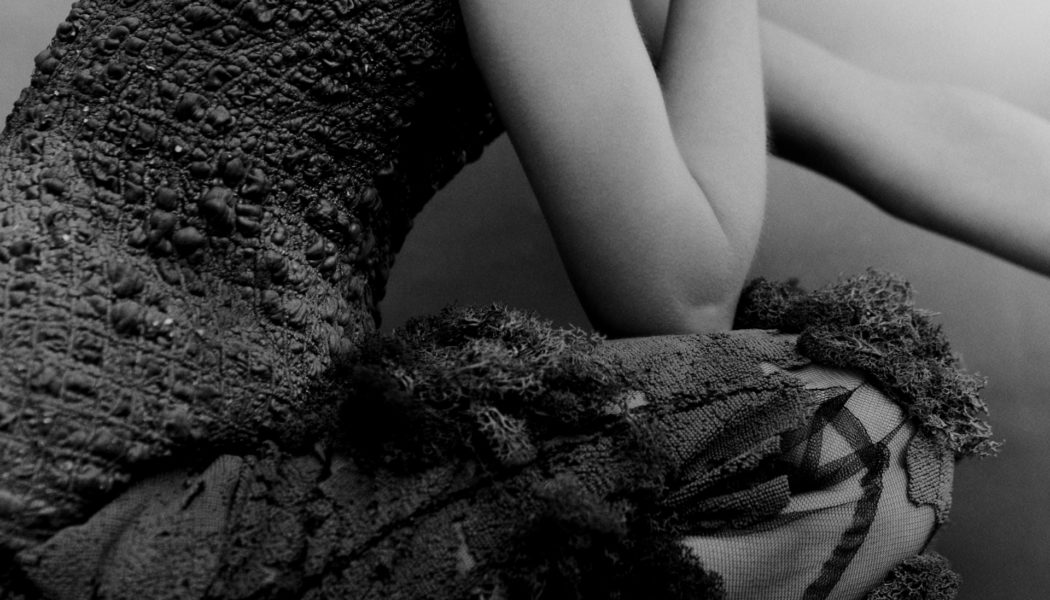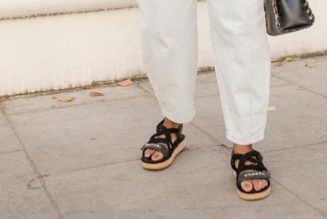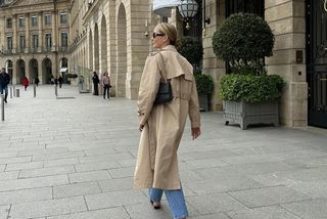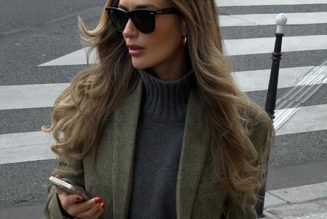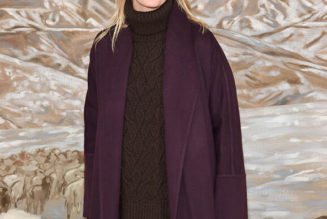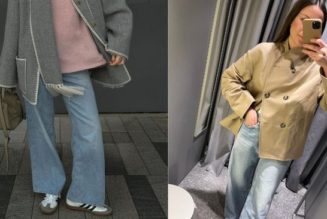Biocouture has finally broken through the luxury fashion space as more and more brands look to become planet-friendly. Designer Piero D’Angelo explains just how much the industry can learn from collaborating with living organisms.
When Piero D’Angelo started making garments in 2018, few designers were working with living organisms to execute their visions. And yet, D’Angelo decided to do just that. Instead of sourcing traditional materials like cotton, linen, and leather, D’Angelo turned to lichens, slime mold, and living fibers to create elaborate dresses and two-pieces—otherwise known as his first collection of biocouture.
“I was only a student at the Royal College of Art when I started working with organisms—with science and technology—to implement them into my designs,” D’Angelo told Atmos. “I was pretty alone in my mission back then.”
Today, D’Angelo is no longer alone. The last few years has seen the rise of biocouture—which commonly refers to garments made exclusively out of natural sources or grown from living organisms—in popular fashion. Living plants have broken into the luxury space such as designer Paula Ulargui Escalona’s plant-based collaboration with Loewe, or Olivia Rubens’ partnership with Machine-A on a collection, titled Photosynthesize, that uses bacterial pigment dyes to color the garments and capture carbon dioxide—just as a plant would. And, unlike plant-based textile alternatives that use natural ingredients to mimic the properties of existing fabrics, biocouture refers to the category of clothing that is home to either living or hibernating microorganisms.
Biocouture sits at the intersection of three distinct disciplines: fashion design, biotechnology, and material engineering. For D’Angelo, who has no formal education in natural or material sciences, the first step of the creative process is inevitably research. “I need to read about a certain living organism, understand how it behaves, get to terms with the conditions that help it to thrive, and get to know what its strengths are,” he said. “Working with living organisms, you never know what you’re going to end up with at the very end.”
One of the organisms D’Angelo routinely works with are lichens, a composite organism composed of a symbiotic partnership between fungi and photosynthetic organisms like algae. There are a range of benefits from working with lichens: they are commonplace; they are diverse in color, pattern, and texture; they serve as important indicators of environmental health; they can thrive in a wide range of environments; and they are, therefore, optimal for experimental biodesign. The result is what D’Angelo describes as grow your own couture—couture changes color, texture, and shape as the organisms expand and develop.
“I want people to grow their own garments so they learn to look after their own garments,” said D’Angelo, who has launched DIY fashion kits for exactly that purpose: to enable wearers to cultivate wearable lichen by submerging a basic garment into a solution that helps the composite organisms grow. “In this way, you build a relationship with your garment in the same way that you would do with a plant. Because at the end of the day, it is a plant. And if you look after your garment, you nurture your garment, then you also think twice before throwing it away.”
Over on the high street, popular brands are increasingly trying to position themselves as carbon-neutral, with major players promising to rid their supply chains of fossil fuels and plastic—or, at the very least, by putting out “eco-friendly” capsule collections in the face of greenwashing allegations. Biocouture, however, goes further. It’s carbon negative, and planet positive. D’Angelo’s clothes are made from algae, which absorbs more carbon dioxide than trees compared to its relative size, in turn cleaning the air around the wearer even if on a very small scale. Biocouture can also bring dermatological health benefits much like probiotics, especially when compared to the harmful chemicals found in polyester.
“Everything I produce is not polluting the environment—quite the opposite,” said D’Angelo. “Throughout the process, I’m thinking about how the materials we create could be good for us and for the planet. This time calls for us to pay attention to everything we create, it needs to do good.”
Slime mold—or physarum polycephalum—is another of D’Angelo’s long-term collaborators, which is planted into the material and left to grow organically, creating a series of unpredictable but beautiful patterns as part of what the designer describes as wetware couture. The process is long, and conditions must be kept consistently optimal for the slime mold to thrive: a combination of warmth, moisture, and relative darkness is necessary during the garment’s early stages. Once a wetware look is complete, the slime mold is fed agar, oats, and other relevant nutrients through miniscule holes in the garment to maintain its health.
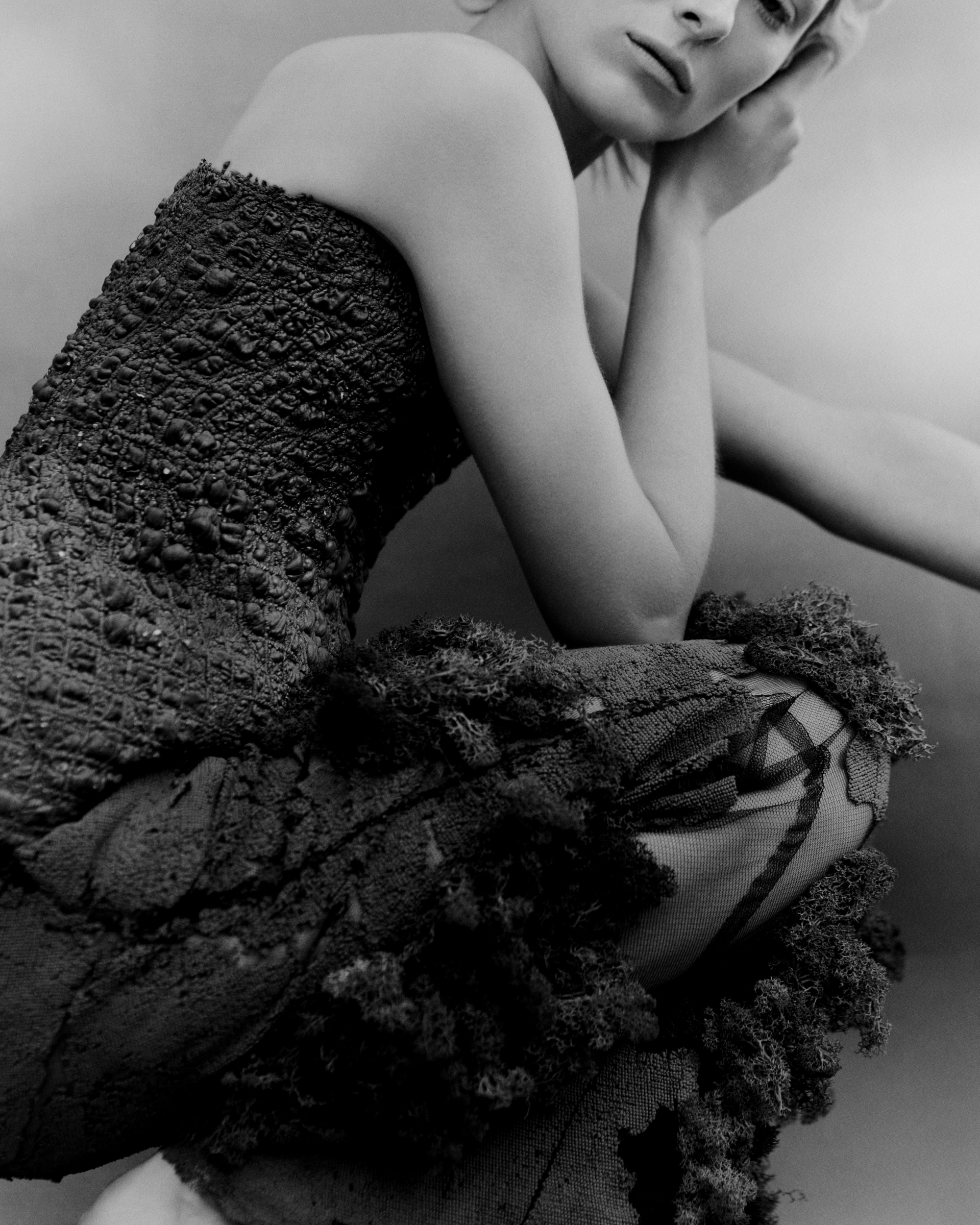
“Throughout the process, I’m thinking about how the materials we create could be good for us and for the planet. This time calls for us to pay attention to everything we create, it needs to do good.”
Piero D’Angelo
Designer
But D’Angelo is quick to stress that the process is still in its experimental phases. “Maybe in one or two years I might feel like I have a complete look from this experiment, but I’m not quite there yet,” he said. To help the process along, D’Angelo has tried creating garments using 3D printing, which mimic the slime mold’s natural shape and include holes big enough for feeding. As the slime mold grows, the 3D printed support structure enables it to expand in line with the garment, resulting in an intricate yellow leaf-like pattern wet-look effect.
“I only use cold water to feed it so there is no energy waste, and I don’t use petrochemicals because all the pigments produced by the slime mold dye are natural,” said D’Angelo. “It’s like a sourdough—if you keep the slime mold happy, it keeps growing. You never run out of it.”
Though the organisms are abundant and the environmental effects undeniably positive, there’s still a long way to go before biocouture can reach mainstream retail. After all, production costs are high and much of the final products still aren’t practical for daily use. Biocouture also requires specialized equipment and lab access as well as experts who can work across disciplines to harness biology for purposes that are both creative and useful.
But despite the fact that much of biocouture is currently released either as limited-edition collections or as conceptual art pieces, D’Angelo believes there’s much the fashion industry can learn from collaborating with nature. And, as an industry that continues to account for around 10% of carbon emissions worldwide, these learnings can’t come soon enough. “We should all be encouraged to think like slime mold,” D’Angelo said. “The slime mold has this collective behavior—a collective mind—where each cell communicates with another in order to achieve a shared goal. In the case of slime mold, it’s about finding the food source. In our case, it could be collaborating in order to create something meaningful; something that will help our planet and its people thrive for years to come.”
stylist Aartthie Mahakuperan Casting Director Pete Hellyer Hair Stylist Roku Roppongi @ Saint Luke Artists Make-Up Artist @ Julian Watson Agency Model Florence Hutchings @ The Hive Management Production Jeska Hayter@ Raw Production Photo Assistant Arthur Comely Stylist Assistant Arlette Elias
Keep Reading
60 Seconds on Earth,Anthropocene,Art & Culture,Climate Migration,Black Liberation,Changemakers,Democracy,Environmental Justice,Photography,Earth Sounds,Deep Ecology,Indigeneity,Queer Ecology,Ethical Fashion,Ocean Life,Climate Solutions,The Frontline,The Overview,Biodiversity,Common Origins,Fabricating Change,Future of Food,Identity & Community,Movement Building,Science & Nature,Well Being,
